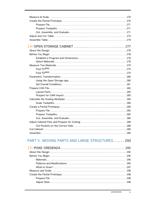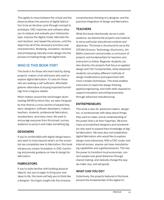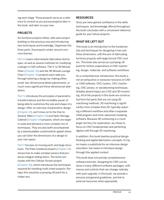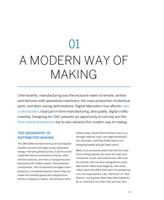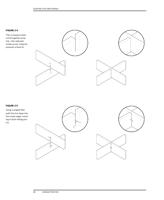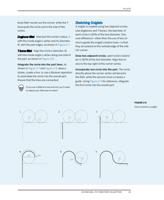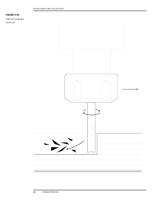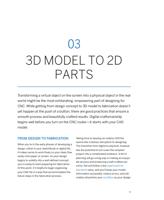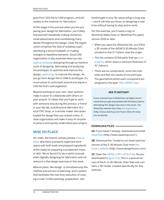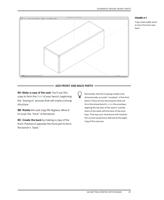
THE 5-30 MINUTE CHAIR
FIGURE 2-35
The slot in the seat is
slightly wider than the
thickness of the mate-
rial, in order to accom-
modate the angled
intersection with the
tab.
slots in each side part to hold the back corners
of the seat. The seat back, the back legs, and
back edge of the seat serve as spacers to keep
the chair sides apart. The stoutly tapered legs,
formed by the sides, front, and back parts
resist the diagonal shear forces that come from
the everyday use of a chair.
As we designed the chair, we looked to the sys-
tem to help us solve design problems. When
the system didn’t offer an obvious solution to
unique conditions, we’d let our interests guide
us. Balancing the systemic and the specific is
an example of what designers confront
throughout the design process. At such
moments, our interests were purely functional,
while at other times, they were compositional
or even whimsical. The important thing is to tap
into whatever drives your curiosity and incites
you to want to make things.
ITERATION AND DESIGN
FRAMEWORKS
This system of joinery, assemblies, structures,
and programs, around which AtFAB is organ-
ized, is an example of a design framework.
Frameworks can take many forms and are help-
ful tools in making decisions when designing
furniture or almost anything else.
Inventing a framework doesn’t have to be a
rigid, linear, or top-down process. Designing a
second or third furniture piece often provoked
us to rethink an elemental detail or assembly
used in an earlier piece. Such rethinking is an
opportunity to refine (or altogether reconsider)
how a particular assembly can work in multiple
instances instead of just one. For example, the
AtFAB foot assembly originated for the 5-30
Minute Chair but evolved as it was incorporated
into several subsequent furniture pieces. The
hanger assembly was designed by working
back and forth between several pieces that
required structural beams. Similarly, the corner
02/END MILL TO FURNITURE COLLECTION
61













